Best Orlando Treatment for a
SHOULDER BLADE PAIN
Are you not able to continue your cherished hobbies or everyday activities because of sharp pain in your mid back when you move? With our expert doctors’ help, you can get to the root of your symptoms and get back to doing what you love quicker and easier.
Read More Ask A QuestionBest Orlando Treatment for a
SHOULDER BLADE PAIN
Are you not able to continue your cherished hobbies or everyday activities because of sharp pain in your mid back when you move? With our expert doctors’ help, you can get to the root of your symptoms and get back to doing what you love quicker and easier.
Read More Ask A QuestionHere Is Everything You Need To Know About A Shoulder Blade Pain, What Causes It, and The Best Way to Treat It
Click the tabs below to get direct answers to your questions
What is shoulder blade pain?
Shoulder blade pain is a condition that involves the popping, grating, grinding, or “snapping” of bones and tissue in the scapula (shoulder blade) area when lifting and moving the arm. The snapping symptoms may be
What are common causes of shoulder blade pain?
Shoulder blade pain is a condition that involves the popping, grating, grinding, or “snapping” of bones and tissue in the scapula area when lifting and moving the arm. It may be caused by a number of bone or soft tissue problems.
- Bones can be malformed from birth, or fractured, causing them to be misshapen. When the scapula moves, it may bump against a misshapen bone as it glides over it, causing a grinding or grating feeling, or sound.
- Soft tissues include muscles and bursae. The muscles between the scapula and the rib cage (subscapularis and serratus anterior) can become tight, shrunken, scarred, inflamed, or weak. As a result, the scapula will become positioned too close to the rib
cage, and may rub painfully on the ribs during arm movement. - Bursae are fluid-filled sacs that act as cushions and normally reduce friction between the scapula and the rib cage, or between the scapula and the muscles. The scapula may rub and irritate a bursa cushion. Popping or snapping can occur from a bursa becoming inflamed, from being rolled over during scapula motion, or from
inadequate reduction of friction by a bursa.
Snapping scapula syndrome can be caused by:
- Repetitive activities, such as reaching overhead or throwing a ball
- Incorrect sports training techniques, such as overtraining, or training without enough prior strengthening
- Incorrect posture
- Weakness in the shoulder area
- Muscle tightness in the chest, neck, shoulder, or scapula area
- Neck conditions
- Shoulder joint problems
- Tumors
- Unhealed fractures of the ribs or scapula
- Inflammation of the muscles or bursae
- Nerve damage in the shoulder area
Complete recovery from snapping scapula syndrome can sometimes take 3 to 6 months, although improvement is often felt after just a few weeks. Healing time varies, depending on the cause and severity of the condition and each individual’s fitness level and goals.
Where does it hurt?
In most cases of shoulder blade pain, patients report a burning or sharp pain right in their shoulder blade area.
What are common symptoms of shoulder blade pain?
A person with snapping scapula syndrome may experience:
- Pain in the back or top of the shoulder when lifting the arm overhead or shrugging the shoulders
- A snapping, grinding, grating, or popping sensation or sound in the scapula area when lifting the arm
- A feeling of weakness in the arm
- “Winging” of the scapula, which makes it appear as if 1 edge is poking out away from the body
- Difficulty performing overhead arm motions due to pain or weakness in the scapula area
- A visible difference in how the painful scapula moves
To Get A "Insider's Look" At Our Treatment Approach And How We Get Results...
Click Below To Watch Our Exclusive Webinar! It's Simple, Short, and It's Free!

- Learn The Essential First Step... So You Can Get Pain Free Again
- See Why Treatment Needs To Be Individualized, Not Standardized...So You Get Faster Results!
- Learn How You Can Save Money...So You Don't Have To Waste $1000's On Unnecessary Treatments
To Get A "Insider's Look" At Our Treatment Approach And How We Get Results...
Click Below To Watch Our Exclusive Webinar! It's Simple, Short, And It's Free!

- Learn The Essential First Step...So You Can Get Pain Free Again
- See Why Treatment Needs To Be Individualized, Not Standardized...So You Get Faster Results
- Learn How You Can Save Money...So You Don't Have To Waste $1000's On Unnecessary Treatments
Can shoulder blade pain be treated?
Yes, shoulder blade pain can be treated and with great results. Even better, many times it can be treated conservatively without needing injections, pain medications, or surgeries if you catch it early enough. The key to treatment is to solve the root cause of your pain so you can get the best results and a long-term outcome.
Some root causes of shoulder blade pain can be:
- Decreased shoulder blade range of motion
- Rounded shoulders with impingement
- Weak mid back and shoulder blade muscles
- Overload to the shoulder joint with active motions
- Tight neck and mid back
- Poor biomechanics causing impingement
- Decreased mid-back rotation
- Tight rotator cuff muscles
If you have failed multiple treatment approaches already, your clinician missed the real root cause of your pain and was just chasing the symptoms. The pain or symptom is the effect, not the cause. What do I mean by this? Say your fire alarm goes off in your house. Its purpose is to protect you and make you aware that something is wrong, i.e., that there is a fire in your house. The “alarm” is like your pain (your body’s way of telling you something is wrong) and the “fire” is the root cause. When the fire alarm goes off, you don’t run upstairs and just turn it off, right? You run through the house with the fire extinguisher, trying to find the room where the fire is at. You try to find out what caused the alarm to go off so you can put it out. Once the fire is out, then the fire alarm can go off. Solve the “root” cause of your pain, and then the pain (“the effect”) eventually goes away.
Additionally, there is a common root cause which many clinicians misdiagnose. They treat the shoulder blade pain with a cookie cutter approach, hoping it will work and treat it as a simple muscle problem. They tend to rely on stretching, ultrasound, massage and focus treatment directly on the shoulder joint. However, often the root cause is missed and the symptoms return. When treatment fails at the shoulder blades, then it’s not a shoulder bald problem. Many times the root cause is at the neck and mid back that is referring pain to the shoulder blade. So many healthcare clinicians treat pain like this and thus show poor treatment outcomes which results in the pain coming back. Why? They missed the root cause of your shoulder pain. This is also the case when patients turn to injections, nerve blocks and other surgeries which are still not effective because the actual problem still is not solved, their treatment was just chasing the pain.
The first step in treatment is to identify the root cause of your pain. A specific and individualized treatment approach for your type of pain can lead to a successful outcome for you and resolve your symptoms for the long term. This is why you can’t rely on a standard cookie cutter approach; you need a customized and individualized treatment approach specifically for your type of shoulder blade pain.
What happens if it goes untreated?
Minor case – If it is a minor case of shoulder blade pain, research shows that many acute cases of pain may spontaneously go away in 4-8 weeks. The key with treatment is what is causing the shoulder blade pain? Is it the neck, the thoracic spine, or an actual shoulder blade problem. This is the essential first step to solve. But who wants to wait 8 weeks to get pain free? Let’s try to solve the root cause of your pain in 2-3 weeks and address all of the risk factors present (so it never returns!) and get you back to your favorite activities faster! We still recommend that you get it checked out by
Severe case – If it’s more of a severe and chronic case of shoulder blade pain, your pain will probably start to worsen and increase because the root cause of the pain is not being treated. Many people turn to pain medication at this time but this only blocks the pain for short term. You may not feel the pain when taking pain medications, but the underlying problem is still there. Many people say after the pain medication is stopped, then usually the pain returns and sometimes it returns even worse. With many of these cases, the root cause and the real diagnosis has not been solved. The shoulder blade pain starts to increase and the pain starts to get more constant and burning. At this time, you need a thorough evaluation to solve the root cause because this means the pain is probably not coming from the shoulder blade. Even though it’s more chronic now, we can still help. Once the root cause and all risk factors are addressed, then we can start decreasing your pain, regardless of how chronic and severe the pain is. This is the crucial first step. It just may take more time to recover from a chronic case. Usually with chronic and severe cases, the longer you have your pain and injury, the longer it takes to resolve.
What outcome can you expect from treatment?
As we’ve discussed, the first step is to solve the root cause of your shoulder blade pain. This is the most essential step to plan a treatment specialized for you and your unique type of pain. Your root cause will guide your treatment and dictate what is the best way to treat your pain. This, along with identifying risk factors that may be predisposing you to have your pain and injury, will allow you to start getting pain free again. The next step is to start decreasing pain, modifying activities, and start addressing all of the impairments causing your pain which we discovered during your evaluation. With each session, pain should start to decrease and you should start to regain range of motion with less pain and symptoms. Any radicular and referred pain should resolve fast as well. At this point, we begin light and basic strengthening only if it does not increase pain. Treatment will consist
The next step is to achieve full range of motion, (which should correlate to being
To Get A "Insider's Look" At Our Treatment Approach And How We Get Results...
Click Below To Watch Our Exclusive Webinar! It's Simple, Short, and It's Free!

- Learn The Essential First Step... So You Can Get Pain Free Again
- See Why Treatment Needs To Be Individualized, Not Standardized...So You Get Faster Results!
- Learn How You Can Save Money...So You Don't Have To Waste $1000's On Unnecessary Treatments
To Get A "Insider's Look" At Our Treatment Approach And How We Get Results...
Click Below To Watch Our Exclusive Webinar! It's Simple, Short, And It's Free!

- Learn The Essential First Step...So You Can Get Pain Free Again
- See Why Treatment Needs To Be Individualized, Not Standardized...So You Get Faster Results
- Learn How You Can Save Money...So You Don't Have To Waste $1000's On Unnecessary Treatments
How is it diagnosed?
If you see your physical therapist first, your therapist will conduct a thorough evaluation that includes taking your health history. Your therapist will also ask you detailed questions about your injury, such as:
- How and when did you first notice the pain?
- Do you hear or feel any popping, grinding or snapping when moving your arm? What activities are you performing when you hear or feel these symptoms?
- Do you have any pain or stiffness in your neck?
- Does your shoulder area feel weak or “tired”?
Your physical therapist will perform special tests to help determine the likelihood that you have
To provide a definitive diagnosis, your therapist may collaborate with an orthopedic physician or other health care provider, who may order further tests, such as an x-ray, to confirm the diagnosis and to rule out other damage to the spine, ribs, and scapula. An x-ray test is not required in all cases.
Do you need an X-ray and MRI imaging for shoulder blade pain?
For most common orthopedic cases, imaging is not needed and the diagnosis can be made with a simple physical therapy evaluation. No need to waste thousands of dollars on unwarranted diagnostic imaging. We also have clinical tests which we can perform to help rule in and rule out pathologies that correlate to MRI findings (which is WAY cheaper than an MRI!). An expensive MRI may just tell us what we already know. Also, often times the positive findings found on x-rays, MRIs, and EMGs may not actually be the root cause of your pain. What does that mean? Many positive findings on an MRI are also found in asymptomatic (pain-free) individuals, so diagnostic imaging may not be able to tell us what is actually causing your pain. For example: many people have a herniated disc in their low back but do not have any low back pain. So if herniated discs can cause no pain, just because someone with low back pain has a herniated disc does not mean that is what’s causing their pain. The key is to find out if your clinical evaluation findings during your evaluation at Pursuit match the MRI findings. If so, then we can decide what is the best way to treat it.
How can a Physical Therapist treat it?
Your physical therapist will work with you to design a specific treatment program that will speed your recovery, including exercises and treatments you can do at home. Physical therapy will help you return to your normal lifestyle and activities.
The First 24-48 Hours
Your physical therapist may advise you to:
- Rest the area by avoiding lifting your
arm overhead or performing other movements that cause pain. - Apply ice packs around the scapula area for 15–20 minutes every 2 hours.
- Make sure you keep your spine in an upright posture when sitting or standing.
- Consult with a physician for further services, such as medication or diagnostic tests.
Reduce Pain
Your physical therapist may use different types of treatments and technologies to control and reduce your pain and symptoms, including ice, heat, ultrasound, diathermy, laser, iontophoresis, electrical stimulation, taping, exercises, and hands-on therapy, such as massage.
Improve Motion
Your physical therapist will choose specific activities and treatments to help restore normal movement in the shoulder, neck, and spine. These might begin with “passive” motions that the physical therapist performs for you to gently move your arm, shoulder, neck, and scapula, and progress to active exercises and stretches that you do yourself.
Improve Flexibility
Snapping scapula syndrome is often related to tight muscles in the chest wall, shoulder, and neck. Your physical therapist will determine if these, or any other muscles, are tight, and teach you how to gently stretch them. Your physical therapist may apply hands-on techniques, such as massage and trigger-point release, to help loosen and stretch the muscles.
Improve Strength and Speed Recovery Time
Certain exercises will aid healing at each stage of recovery; your physical therapist will choose and teach you the correct exercises and equipment to steadily restore your strength and agility. Your physical therapist is trained and experienced in choosing the right treatments and exercises to help you heal, return to your normal lifestyle, and reach your goals faster than you are likely to do on your own.
Return to Activities
Your physical therapist will discuss your goals with you and use them to set your work, sport, and home-life recovery goals. Your treatment program will help you reach those goals in the safest, fastest, and most effective way possible.
Prevent Future Injury
Your physical therapist can recommend a home exercise program to strengthen and stretch the muscles around your shoulder and arm to help prevent future injury. These may include strength and flexibility exercises for the muscles of the neck, shoulder, arm, and scapula.
If Surgery Is Necessary
Surgery is not frequently needed in the case of snapping scapula syndrome. If surgery is needed, you will follow a
How long does it take for recovery?
Recovery time for shoulder blade pain depends on multiple factors:
- The severity and chronicity of your pain
- Whether your pain is an easy or complex case
- If the root cause of your pain was solved or if it was missed (this is the key to getting a great recovery!)
- How long you have been in pain for and when you need to be
pain free by - Other therapies and treatments you have tried
- Which medical professional(s) you saw prior to seeing us
- How active you are in trying to resolve your pain
- Which treatment approach is chosen and if it is proven to work for your pain
There are many factors that influence your recovery time and every patient’s recovery time is different. If you do nothing and don’t pursue treatment, it could gradually get better on its own, you could continue to have the same pain persist, or it could continue to get worse. As stated earlier, most acute cases may or may not resolve in 4-8 weeks. If you get expert treatment that solves the root cause of your pain, some cases resolve in 1-3 weeks! Then you can get back to sports, exercise, and your favorite activities without flare-ups and recurrences. Some of our patients are
If it is a complex case with chronic pain, your recovery may take longer, but you can still get a good outcome. Some chronic cases can resolve as fast as 2 months but can take as long as 4-6 months. It varies with every patient because every case of shoulder blade pain is different. Every patient’s recovery varies depending on the factors listed above. After a thorough evaluation here at Pursuit Physical Therapy, you will know your exact timeline of recovery, your prognosis, and when you should reach your goals.
How much does it cost?
The average cost of care for a case of spine pain in the US is $1800-$6600. This high price is due to many factors: the over-inflated cost of healthcare, the over expensive cost of unwarranted imaging (x-rays, CT scans, and MRIs) that is not needed, over-utilization of care (which increases the number of visits needed to be treated, requiring multiple visits to different doctors and physical therapists for the same diagnosis), and getting billed for unnecessary and unproven treatments that you don’t even need. All of these factors increase cost and this is why healthcare is so expensive. We strive to end that unnecessary, expensive cycle. In fact, we are currently publishing our first-year data with the University of Central Florida that shows the cost-effectiveness of our treatment approach.
This year, the average cost of our care was shown to be $814-$1141. Some of our patients get even as low as $315 for the full treatment! So if you have a deductible of $3,000-$10,000 and you have to pay out of pocket for your treatment, we can save you lots of money.
Remember, every case of pain is different and not all shoulder blade pain is the same. It is hard to predict exactly how much your treatment is going to cost you. But after a thorough evaluation, we can tell you exactly what is causing your pain, how long it is going to take, what the best way to treat it will be, and exactly how much it is going to cost. We have no hidden fees, no co-pays, and no miscellaneous bills that you will be surprised by 3 months after you receive treatment. Your pain, your diagnosis, your goals, and what is best for you dictate your treatment and how much it will cost, and while it varies for every patient, treatment at Pursuit is still much more affordable than standard healthcare.
How long are sessions?
Our evaluations are always one-on-one with one of our board-certified specialists and 60-90 minutes long. We like to perform thorough evaluations so we can solve the root cause of your pain, identify all risk factors, and make sure that we do it right. After the evaluation, you will know your diagnosis, the root cause of why you have your pain and symptoms, your prognosis, an expected timeline of when you should see results, what the best way to treat your pain is, how much it will cost, and your expected recovery outcome. We want you to fully understand everything about your pain and injury. What is best for you and will get you the best outcome is what will dictate your care and treatment. There will be plenty of time for you to ask questions so we can make sure you fully understand why you have your pain and what the best way to treat it will be. After the evaluation is completed, all treatment sessions are 60 minutes going forward and still one-on-one with your physical therapist. You and your physical therapist will design a customized treatment plan that works for you and that will achieve your goals.
How can it be prevented?
To help prevent a recurrence of the injury, your physical therapist may advise you to:
- Maintain
good , upright posture and avoid slouching. - Maintain the strength in your scapula and shoulder joint muscles.
- Use proper athletic techniques when performing sports that require overhead arm movements.
What are next steps?
Getting started is simple. The first step, and the key to getting you
Solve the root cause of your pain
How Our Treatment is Different
We believe that working with a specific specialist for your care is the best way to solve the root cause of your pain. Work one-on-one with a Doctor of Physical Therapy every time your visit our office.
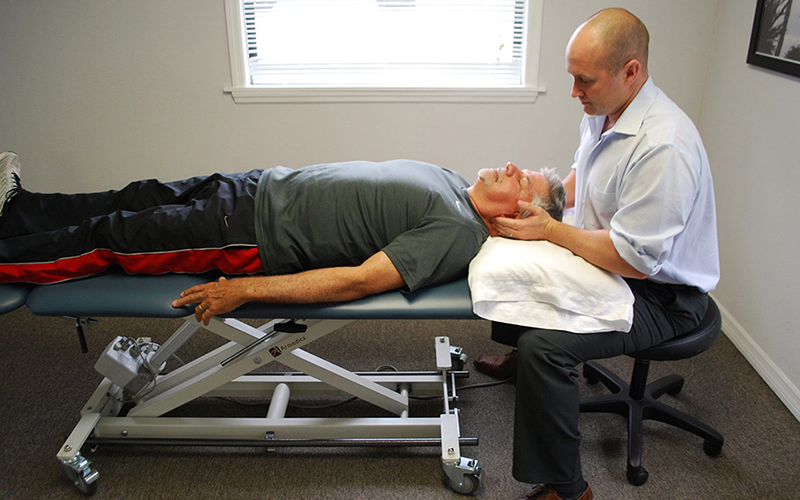
Exclusive one-on-one patient care
While most clinics will give you a limited amount of time with your Doctor, we believe that true results come from consistent one-on-one therapy.
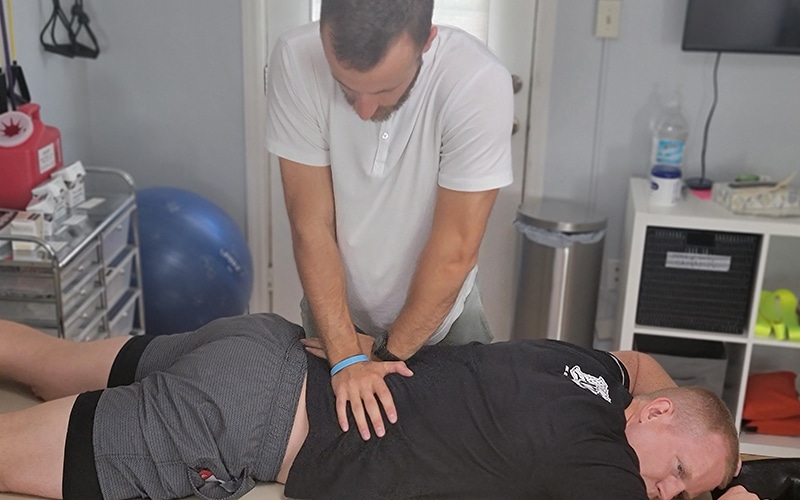
Work with your specialist every visit
Stop being handed off to trainees or non-Doctors for your Physical Therapy. At Pursuit, you'll work exclusively with your Doctor of Physical Therapy that specializes in your specific needs.
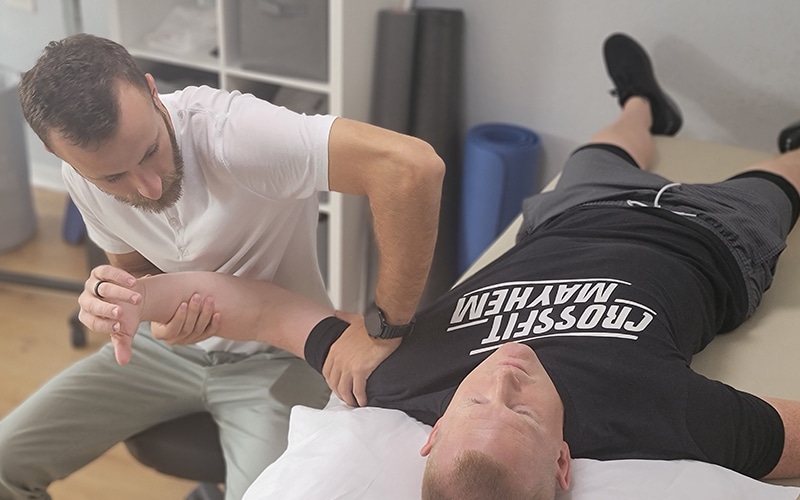
24/7 messaging access to your specialist
Ever have an issue or questions? We're here to help. Get 24/7 access to your specialist while you're under our care. Physical Therapy doesn't just happen when you're in our clinic, so we're here for you when you need us.
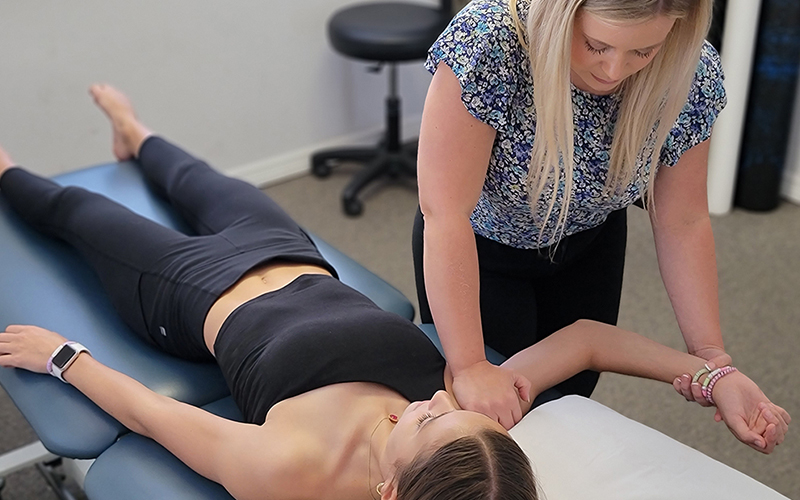
No waiting periods
Get off that waiting list and get the treatment you need. We're always ready to accept new patients, so you can get better faster and get back to a pain-free life that you deserve.
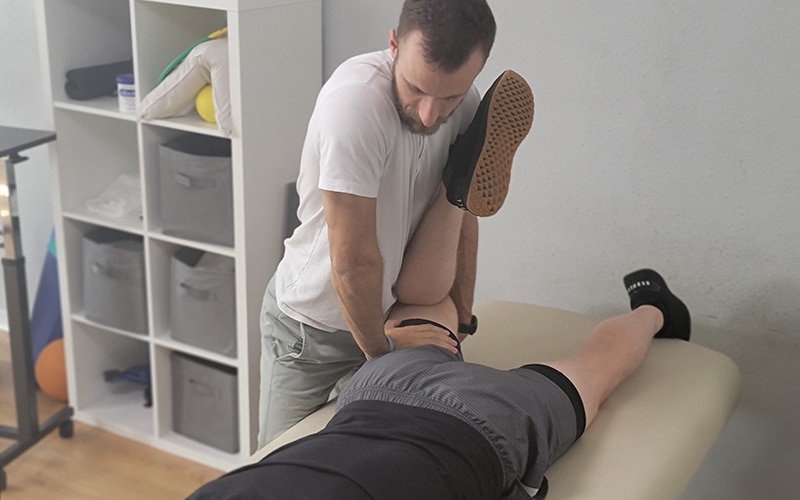
Not limited by insurance
Don't let the insurance companies tell you how much treatment you need. Avoid the limitations of short sessions that insurance provides and work with our Doctors when you need it and for as long as you need it.
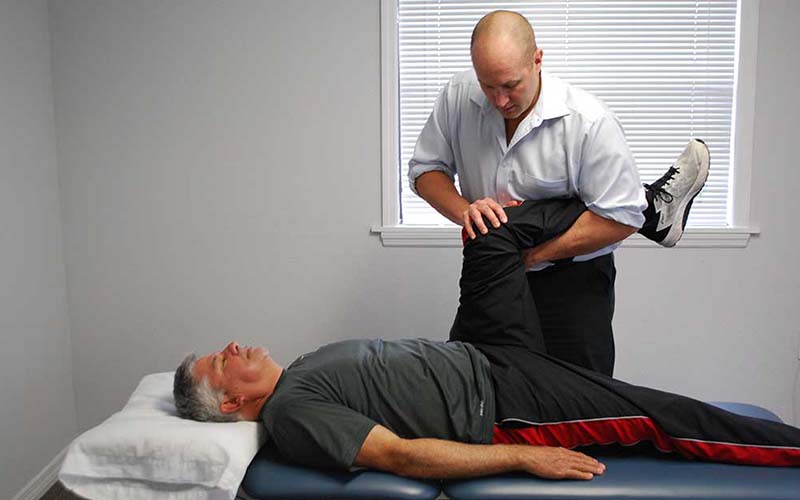
No painful injections, no expensive medications, no surgery
In order to truly solve your pain, we use a holistic approach to Physical Therapy, not relying on injections, medications, or surgery. Instead, we'll strengthen your body's weak points that are causing your pain.
MEET THE TEAM

RON MILLER, DPT, OCS, Cert DN
Doctor of Physical Therapy | Board Certified Orthopaedic Physical Therapy Clinical Specialist | Post-Doctoral Orthopaedic Residency Trained | Certified in Dry Needling | Titleist Performance Institute Certified
Dr. Ron Miller is the owner and founder of Pursuit Physical Therapy. His core belief is that it is not about the physician, the physical therapist, or the insurance company: it is about what is truly best for the patient. Dr. Miller started...

CAREY ROTHSCHILD, DPT, OCS, SCS, CSCS, CKTP
Doctor of Physical Therapy and Assistant Professor at the University of Central Florida | Board Certified Orthopaedic Clinical Specialist
| Board Certified Sport Clinical Specialist
Dr. Carey Rothschild is an Assistant Clinical Professor in the Doctor of Physical Therapy Program at the University of Central Florida. Dr. Rothschild earned a Bachelor of Health Science in Physical Therapy in 1999 from the University of Florida and a Doctor of Physical Therapy from Boston University in 2005...


MICHAEL FABRICK, DPT, Cert. DN
Doctor of Physical Therapy | Certified in Dry Needling | Pursuit Sports Performance Specialist | Professional Tennis Tour Physical Therapist
Dr. Michael Fabrick was born and raised in Hanover, Pennsylvania and attended Slippery Rock University where he received his Bachelor’s degree in Exercise Science. He then went on to receive his Doctorate Degree in Physical Therapy in May of 2020. During his final tenure as a Doctoral intern, he trained underneath Todd Ellenbecker, who is one of the world’s leading experts on shoulder rehabilitation and is the Vice President of Medical Services for the ATP World Tour...
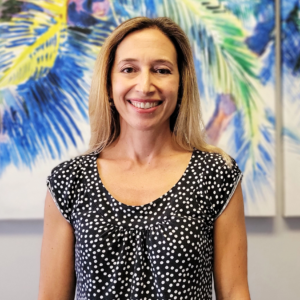
MARYANN DANIELS, PT, MCMT, IDN
Physical Therapist | Dry Needling Certified | Mastery Certified In Manual Therapy | Pelvic Floor And Post Partum Specialist
Maryann was originally born in Connecticut but moved to Florida with her family at the age of 9 and she grew up in Jupiter, Florida. She then went to college at the University of Central Florida...

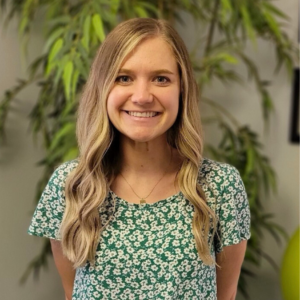
Kayla Cook, DPT, HSP, CSCS
Doctor of Physical Therapy | Hesch Sacroiliac Practitioner | Certified Strength And Conditioning Specialist | Ehlers-Danlos Syndrome Specialist | Volleyball Specialist
Dr. Kayla Cook was born and raised in Northern California and received her undergraduate degree in Kinesiology from California State University in Sacramento. She then received her Doctorate in Physical Therapy from The University of St Augustine for Health Sciences...
BECOMING PAINFREE IS EASIER THAN YOU THINK

Step 1:

Step 2:


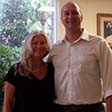 Lily P.
Lily P. Lisa B.
Lisa B.